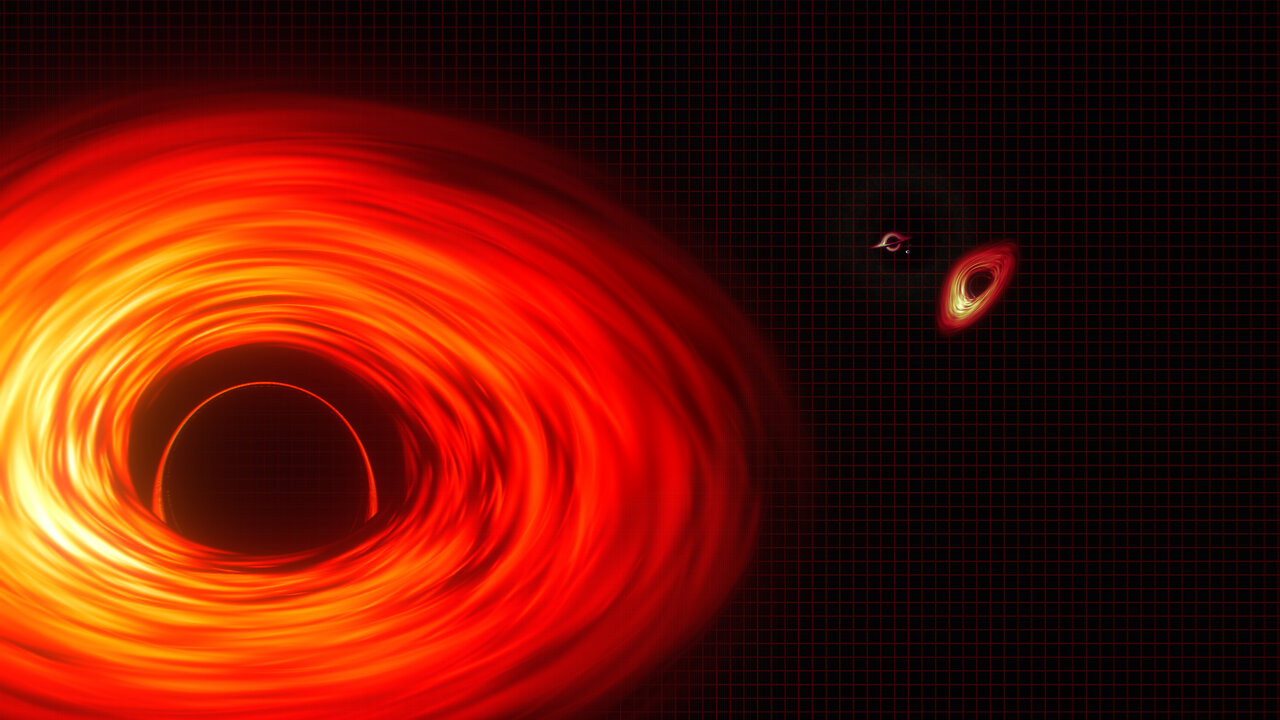Premium Only Content

NASA Animation Sizes Up the Biggest Black Holes
Editor’s Note: A previous version of this video mislabeled the orbit of Saturn as the orbit of Jupiter.
This new NASA animation highlights the “super” in supermassive black holes. These monsters lurk in the centers of most big galaxies, including our own Milky Way, and contain between 100,000 and tens of billions of times more mass than our Sun.
Any light crossing the event horizon – the black hole’s point of no return – becomes trapped forever, and any light passing close to it is redirected by the black hole’s intense gravity. Together, these effects produce a “shadow” about twice the size of the black hole’s actual event horizon.
The animation shows 10 supersized black holes that occupy center stage in their host galaxies, including the Milky Way and M87, scaled by the sizes of their shadows. Starting near the Sun, the camera steadily pulls back to compare ever-larger black holes to different structures in our solar system.
First up is 1601+3113, a dwarf galaxy hosting a black hole packed with the mass of 100,000 Suns. The matter is so compressed that even the black hole’s shadow is smaller than our Sun.
The black hole at the heart of our own galaxy, called Sagittarius A* (pronounced ay-star), boasts the weight of 4.3 million Suns based on long-term tracking of stars in orbit around it. It’s shadow diameter spans about half that of Mercury’s orbit in our solar system.
The animation shows two monster black holes in the galaxy known as NGC 7727. Located about 1,600 light-years apart, one weighs 6 million solar masses and the other more than 150 million Suns. Astronomers say the pair will merge within the next 250 million years.
At the animation’s larger scale lies M87’s black hole, now with a updated mass of 5.4 billion Suns. Its shadow is so big that even a beam of light – traveling at 670 million mph (1 billion kph) – would take about two and a half days to cross it.
The movie ends with TON 618, one of a handful of extremely distant and massive black holes for which astronomers have direct measurements. This behemoth contains more than 60 billion solar masses, and it boasts a shadow so large that a beam of light would take weeks to traverse it.
Music credit: "In the Stars" from Universal Production Music
Credit: NASA's Goddard Space Flight Center Conceptual Image Lab
-
 2:17:55
2:17:55
FreshandFit
5 hours agoMr Organik Vs Garry The Numbers Guy “N Word” Debate!
102K13 -
 2:05:11
2:05:11
Inverted World Live
9 hours agoCyborg Jellyfish, Cockroach Spies, and the Humanoid Holocaust w/ Joe Allen | Ep. 96
101K10 -
 3:30:50
3:30:50
Laura Loomer
8 hours agoEP139: Loomer Shuts Down Gazan Visas
42.5K84 -
 2:48:44
2:48:44
TimcastIRL
8 hours agoTrump Claims Total Victory, Court Eliminates $500M Fine In NY Fraud Case | Timcast IRL
193K77 -
 6:02:30
6:02:30
SpartakusLIVE
10 hours agoVerdansk QUADS || #1 MACHINE is BACK taking NO DAYS OFF (until I feel like it)
56K -
 3:22:12
3:22:12
Alex Zedra
6 hours agoLIVE! Ready or Not
42.2K2 -
 29:05
29:05
Man in America
18 hours agoDid the Fed Just Admit Gold Will Be Revalued? This Could Change EVERYTHING
44.4K23 -
 45:54
45:54
MattMorseTV
8 hours ago $8.75 earned🔴55 MILLION immigrants are UNDER REVIEW. 🔴
45.1K54 -
 3:15:07
3:15:07
TheItalianCEO
9 hours agoLast Stream before I go - Playing The Finals
30.2K -
 1:14:43
1:14:43
JustPearlyThings
8 hours agoPearl Reacts: 20 Black Conservatives DESTROY Radical Feminist Activist | Pearl Daily
48K23